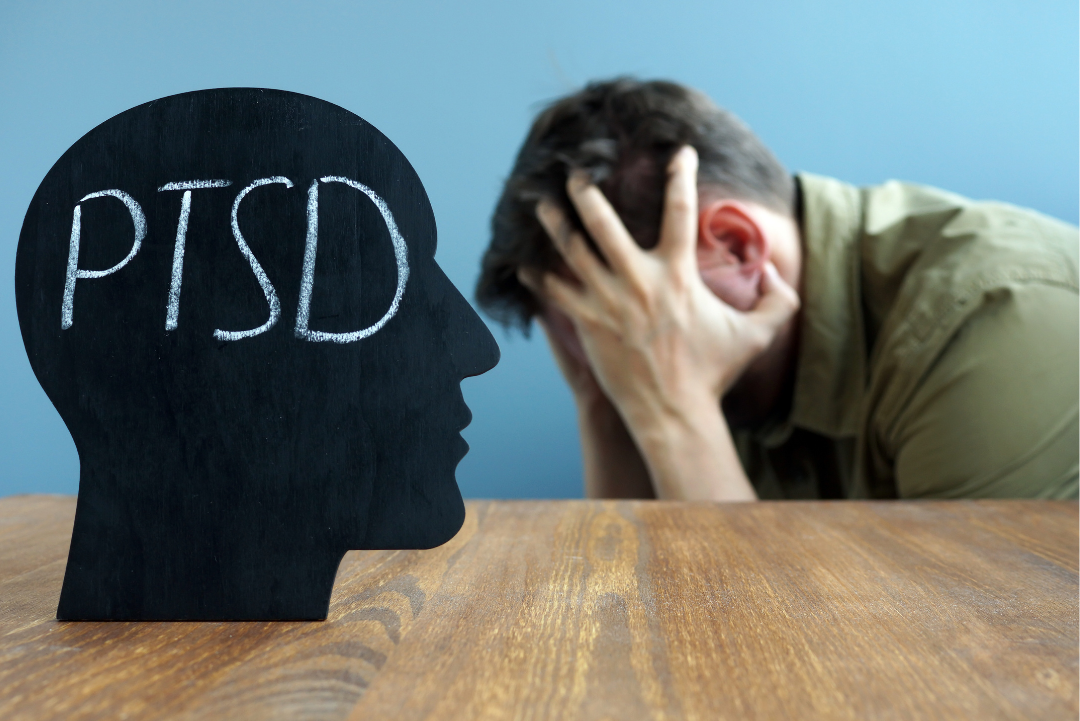June 27th was PTSD Awareness Day. We are dedicating the month of July to educating our readers about the illness and the role that exercise can play in helping those with PTSD. Hopefully the month, instead of just one day, makes up for our tardiness….
Part 1: PTSD – What is it? Why Exercise?Part 2: PTSD and Exercise – The Physiology of PTSD and Exercise
PTSD Part 1:
What is it? Why Exercise?
July 2019

What is it?
Post Traumatic Stress Disorder (PTSD), results from exposure to a traumatic event. A traumatic event is generally considered to involve the threat or occurrence of serious injury or sexual violence. Examples include combat and assault (as may be repeated in military and policing roles), or abuse (such as physical or sexual assault) [i].
However, the exposure to such an event does not always lead to a diagnosis or suffering of PTSD. The disorder itself appears to be the dysregulation of normal fear processing. Studies comparing those who endure PTSD and those who don’t are useful in finding treatment options.
Diagnosis
- Exposure to a traumatic event. This does not have to be one event. The stress can also be accumulated.
Plus, the presence of the below for at least 4 months which impact their capacity to function in social, work, or other psychosocial environments.
- Frequently re-experiencing the event, through intrusive thoughts, nightmares, flashbacks, or emotional/physical reactivity following contact with traumatic reminders (Triggers). These triggers don’t always have to be an exact replica of the experience but may have similarities.
- The individual avoids trauma-related stimuli (any incident that may provoke undue thoughts, feeling, or memories).
- Negative thoughts or feelings that worsen after the trauma.
- Trauma related arousal and reactivity such as difficulty concentrating or sleeping, hypervigilance and a heightened startle reaction.
There are two other subtypes of PTSD involving additional psychological reactions, as well as Complex-PTSD increasing in recognition. But we will leave those to the specialists (psychologists and psychiatrists) to explain.
A quick note… As Exercise Physiologists we will never diagnose or attempt to diagnose a patient with a mental health condition. In the same way that a Psychologist would benefit from understanding the difference between a supraspinatus tear and subacromial bursitis as health practitioners working within the mental health population it is very helpful for us to know the criteria that is applied to clients with PTSD.
Who gets it?
PTSD is common in military Veterans, with up to 20% of veterans experiencing PTSD in their lifetime. And of course, our first responders: Police (~12.5%), firefighters (~8%) and paramedics (~11%). Remember though, these stats are just those who have been diagnosed! There is a significant proportion with suspected PTSD as well!
For these guys, in addition to the high level of exposure to traumatic events (car accidents, domestic violence, suicide, assault towards themselves or a victim), the effects of fatigue on the body, through shift work and long hours, basically prime the body’s nervous system to develop PTSD!
Less in the spotlight, are our civilians: survivors of physical and sexual assault, refugees fleeing for their lives from war-torn counties, sometimes Motor Vehicle Accidents and those who have experienced a natural disaster.
Living with PTSD

From the diagnostic criteria you can see the difficulty of living with PTSD, for example:
- Nightmares interrupt sleep, if they are brave enough to sleep.
- Flashbacks, triggers and even the cognitive impairments make it difficult to perform everyday tasks, let alone hold a job and if they are holding it, it’s often an uphill battle.
- Reactions to triggers can be very debilitating. Sometimes the mind can be completely involved in the event and the body can react to this, sometimes it can feel the body has a memory of its own – which then lends anxiety to the mind.
- The fear of triggers can lead to avoidance of social activities, resulting in social isolation. This is compounded if they are not working, as many experience shame for not working, especially when it comes to meeting new people.
“Hi I’m Biara, I’m an Exercise Physiologist, I love my job! What do you do with yourself?” - If they are in a relationship, you can understand the extraordinary strain on the relationship.
- Anxiety, depression, suicidality, substance abuse, fatigue and chronic pain are also common comorbidities of PTSD
The cocktail of difficulties above, understandably, leads to lowered emotional tolerances, lowered moods, sometimes presenting as aggression, which can be further isolating!
Not only is it (literally) a nightmare to live with. There are other health complications as well!!
We will delve into these in Part 2.
Why Exercise?

Exercise has been shown to be a promising adjunct therapy to usual care for PTSD.Numerous studies have shown superior results in PTSD treatment when exercise is added. The use of exercise appears to enhance the speed of recovery through improving PTSD symptoms, depression, anxiety, sleep and pain!
Stay tuned for Part 2, where you’ll learn exactly how exercise helps PTSD.

Biara Webster
Exercise Physiologist and Writer
- J Chan (2018), Heart rate variability biofeedback as an intervention method for reducing PTSD symptoms in police officers exposed to trauma, a thesis submitted to the Department of Psychology, university of Toronto
- https://at-ease.dva.gov.au/professionals/assessment-and-treatment/ptsd
- G Harman (2019), Answering the call: mental health needs of police and emergency service personnel, Australian Journal of Emergency Management, Vol.34(1)
- C Ley et al., (2018) “In the sport I am here:” therapeutic processes and health effects of sport and exercise on ptsd, Qualitative Health Research, Vol. 28(3), 491-507, https://doi.org/10.1177/1049732317744
- S Rosenbaum (2014), Exercise Augmentation compared with usual care for post-traumatic stress disorder: a randomized controlled trial, Acta Psychiatr Scand 2014:1-10, DOI: 10.1111/acps.12371
- Petrie, K., Milligan-Saville, J., Gayed, A. et al. (2018), Prevalence of PTSD and common mental disorders amongst ambulance personnel: a systematic review and meta-analysisSoc Psychiatry Psychiatr Epidemiol, 53: 897. https://doi.org/10.1007/s00127-018-1539-5
- T Lees et al. (2019), A systematic review of the current evidence regarding interventions for anxiety, PTSD, sleepiness and fatigue in the law enforcement workplace, j stage industrial health
- S Harvey et al. (2016), The mental health of fire-fighters: an examination of the impact of repeated trauma exposure, Australian & New Zealand Journal of Psychiatry, 50:7, 49-658




